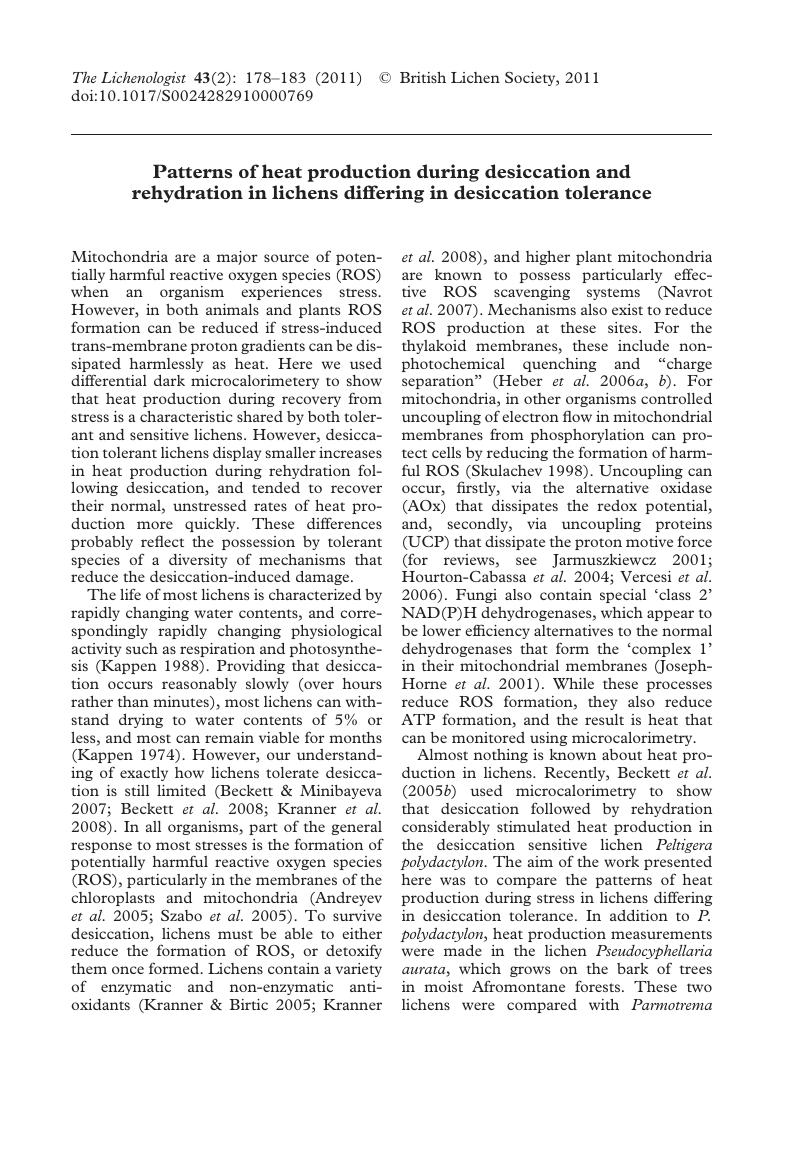Crossref Citations
This article has been cited by the following publications. This list is generated based on data provided by Crossref.
Hodkinson, Sarah Z.
and
Hodkinson, Brendan P.
2011.
Recent literature on lichens—222.
The Bryologist,
Vol. 114,
Issue. 3,
p.
653.
Ritchie, Raymond J.
2014.
Photosynthesis in an Encrusting Lichen (Dirinaria picta(Sw.) Schaer.ex Clem., Physiaceae) and its Symbiont,Trebouxiasp., Using Pulse Amplitude Modulation Fluorometry.
International Journal of Plant Sciences,
Vol. 175,
Issue. 4,
p.
450.
Higgins, Niall F.
Connan, Solène
and
Stengel, Dagmar B.
2015.
Factors influencing the distribution of coastal lichens Hydropunctaria maura and Wahlenbergiella mucosa.
Marine Ecology,
Vol. 36,
Issue. 4,
p.
1400.
Fernández-Marín, Beatriz
Buchner, Othmar
Kastberger, Gerald
Piombino, Federica
García-Plazaola, José Ignacio
and
Kranner, Ilse
2019.
Non-invasive diagnosis of viability in seeds and lichens by infrared thermography under controlled environmental conditions.
Plant Methods,
Vol. 15,
Issue. 1,
Shelyakin, Mikhail
Zakhozhiy, Ilya
and
Golovko, Tamara
2020.
The effect of temperature on Antarctic lichen cytochrome and alternative respiratory pathway rates.
Polar Biology,
Vol. 43,
Issue. 12,
p.
2003.
Shelyakin, M. A.
Zakhozhiy, I. G.
Dalke, I. V.
Dymova, O. V.
Malyshev, R. V.
and
Golovko, T. K.
2021.
Photosynthetic and Respiratory Capacity of Foliose Lichen Lobaria pulmonaria throughout the Annual Cycle.
Russian Journal of Plant Physiology,
Vol. 68,
Issue. 6,
p.
1048.
Wang, Shuzhi
Li, Wenfeng
Wufuer, Rehemanjiang
Duo, Jia
Pei, Liang
and
Pan, Xiangliang
2023.
The Key Role of Cyclic Electron Flow in the Recovery of Photosynthesis in the Photobiont during Rehydration of the Lichen Cladonia stellaris.
Plants,
Vol. 12,
Issue. 23,
p.
4011.


